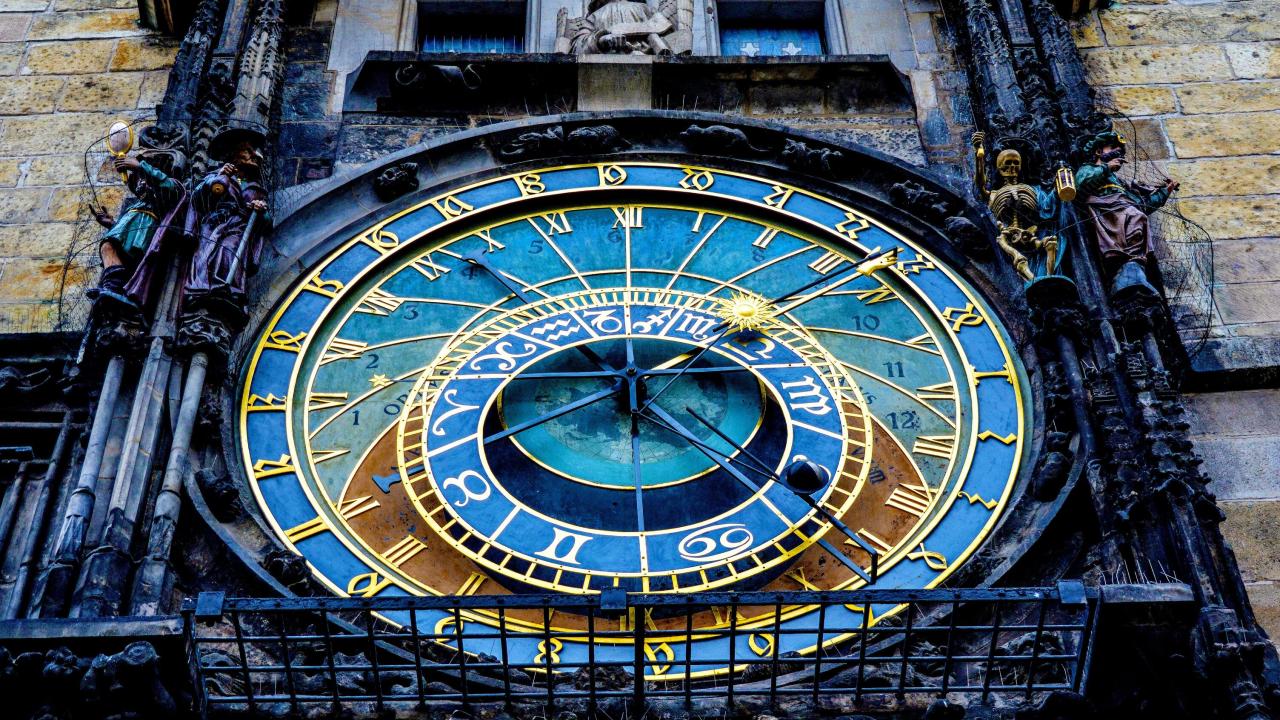
Removing the Arrow of Time from The Equation
Studies Investigate Space Between Quantum Realm and Formation of Classical Reality
Quick Summary
- In two papers appearing in Physical Review Research, UC Davis and Los Alamos National Laboratory researchers divorce the arrow of time from the go-to theoretical tool for understanding decoherence: the Caldeira-Leggett model.
- In the world of quantum physics, decoherence is when a system’s behavior shifts from being explainable by quantum mechanics to being explainable by classical mechanics.
- Understanding the decoherence process at this granular level may be particularly important to developing successful quantum computing methods.
The arrow of time is a staple of human perception. Every second of every minute of every hour of every day, you live it. If you spill a drink, you can’t reverse time and pull the liquid back into the cup.
But beneath the fabric of our perceived reality is a quantum realm, a world of subatomic particles that behave in ways baffling to our classical understanding of the universe. It’s a world of quantum superpositions, in which systems exist in multiple states until they’re measured.
“Quantum physics doesn’t just tell one story; it tells many probabilities of different stories,” said Distinguished Professor of Physics and Astronomy Andreas Albrecht, who directs the Center for Quantum Mathematics and Physics at UC Davis. “In the cosmology world, there’s a question of how did the universe come to be such a thing that’s so good at hiding quantum physics?”
For Albrecht, the answer to that question may lie in investigating the relationship between quantum physics and the arrow of time.
In two papers appearing in Physical Review Research, Albrecht and his colleagues introduce a new model to explore the phenomenon of decoherence, which is when a system’s behavior shifts from being explainable by quantum mechanics to being explainable by classical mechanics.
“Decoherence is part of the reason why you and I experience a classical reality largely free from quantum ‘weirdness,’” said Rose Baunach, a physics graduate student and the papers’ co-author. “It’s the process by which quantum superpositions are reduced to classical states due to interactions with an environment.”
In their work, Albrecht, Baunach and Andrew Arrasmith, of Los Alamos National Laboratory, divorce the arrow of time from the go-to theoretical tool for understanding decoherence: the Caldeira-Leggett model.
Adapting the Caldeira-Leggett model
Since time is inherent to our perception of the universe, it’s often unthinkingly included in our theories about how the universe works. Albrecht referred to this phenomenon as “temporal provincialism,” a term popularized in the physics community by Leonard Susskind, the Felix Bloch Professor of Physics at Stanford University.
“We’re so used to the arrow of time being part of our world that we very naturally include it in our theories unquestioningly,” Albrecht said. “We’re so stuck in our little world, or our little universe, that we forget how things might actually be.”
The standard Caldeira-Leggett model, introduced in 1981, is temporally provincial with the arrow of time built into the math underlying the model. But the arrow of time, or rather our perception of it, isn’t necessarily an underlying component of the universe.
“As far as we know, the laws of physics don’t have an arrow of time and they respect both directions of time equally at sort of the fundamental level,” said Albrecht, who used the classic force equation (Force = mass x acceleration) as an example. “If I throw a ball, F=ma applies to that ball. If we show a video where the ball is coming back to me, it’s still F=ma.”
With this percolating in his mind, Albrecht sought to develop a way to divorce the arrow of time from the Caldeira-Legett model, eventually coming up with the Adapted Caldeira-Leggett model.
“I wanted to ask the questions: What would happen if we didn’t have an arrow of time?” Albrecht said. “How would decoherence work? Would you be able to hide quantum physics the same way? Would quantum physics work the same way?”
“What we learned is that quantum physics is so mercurial that you can have a universe without an arrow of time, but to a creature like us, it looks like it has an arrow of time,” he added.
Copycats and decoherence
To develop the utility of the Adapted Caldeira-Leggett model, Albrecht tapped Baunach to test the model during the earliest stages of decoherence and einselection, the latter term describing a “special type of decoherence where interactions between a system and its environment cause the system to evolve into a particularly stable state,” according to Baunach.
“These stable states are particularly resistant to further quantum disruption from the environment, and hence are very common in nature,” she said.
The resulting paper, “Copycat process in the early stages of einselection,” investigates the space between the start of decoherence and complete einselection, identifying and mathematically describing a new phenomenon that occurs early during decoherence, which the team calls the “copycat process.”
“We now know that immediately after a system is set up in a quantum superposition, it will go through the copycat process during the early stages of decoherence as it begins to interact with its environment,” Baunach said. “The copycat process gets its name from the fact that we found the two states describing the system at the onset of decoherence are mirror images of each other in the simplest examples we’ve studied.”
Understanding the decoherence process at this granular level may be particularly important to developing successful quantum computing methods.
“For quantum computations to be possible, we need to preserve the quantum superposition capabilities of quantum bits — which means mitigating the effects of decoherence from their surrounding environment,” Baunach said. “We hope that the addition of the copycat process to the literature on decoherence will increase our field’s understanding of this important physical phenomenon.”
“Today, everyone is trying so hard to engineer quantum objects,” Albrecht added. “Our work provides a detailed understanding of how quantum objects behave in the very beginning of this decoherence.”
